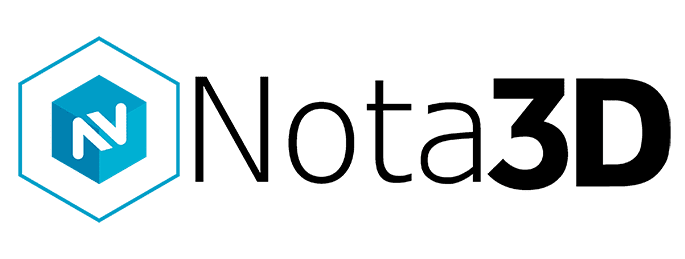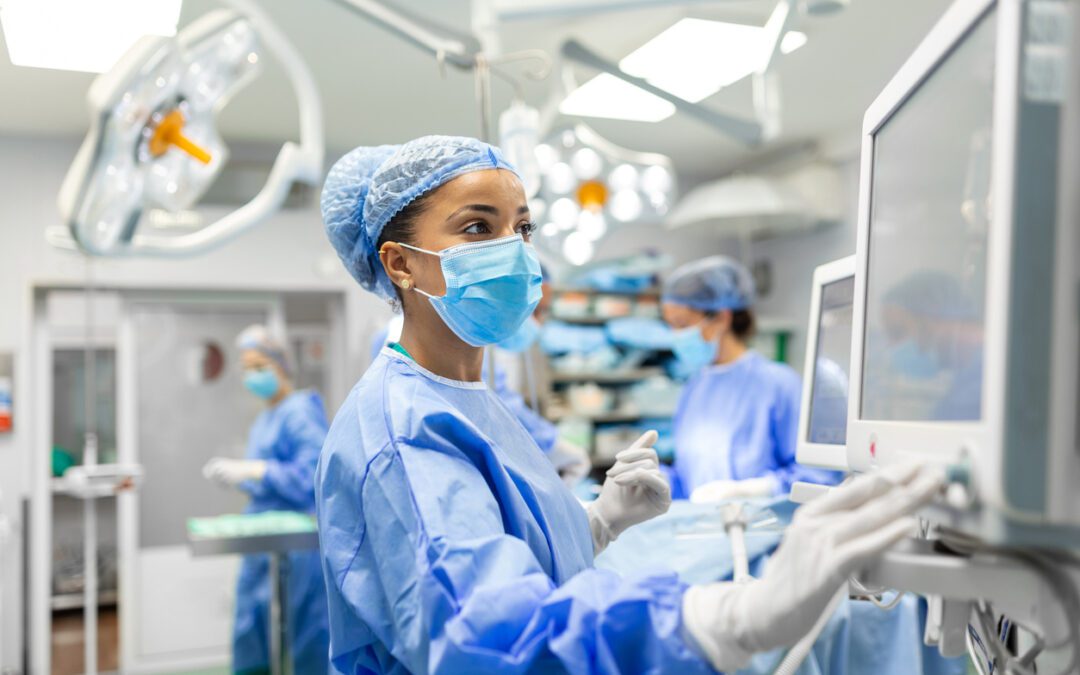7 Benefits of Additive Manufacturing in Healthcare
3D printing has brought about significant advancements in various industries, and the healthcare sector is no exception. It is playing a transformative role in shaping medical research and development. This innovative technology offers researchers unprecedented opportunities to explore new frontiers and push the boundaries of medical science. With 3D printing, researchers can create intricate anatomical models, allowing them to study diseases, test new drugs, and develop innovative medical interventions with greater accuracy. It enables the production of patient-specific models, aiding in the understanding of complex physiological structures and enhancing preclinical testing. 3D printing also facilitates the rapid prototyping of medical devices and implants, allowing researchers to iterate designs more efficiently and accelerate the development process.
This innovative technology has revolutionized healthcare by offering numerous benefits and applications that have the potential to improve patient care, medical research, and medical device manufacturing. Let’s take a closer look at some of these key benefits of 3D printing in the healthcare industry:
- Personalized and Customized Solutions – 3D printing enables the creation of patient-specific models, implants, and prosthetics. By using patient-specific data, medical professionals can design and produce personalized healthcare solutions tailored to an individual’s unique anatomy. This customization ensures better treatment outcomes, reduced complications, and improved patient satisfaction. Prosthetics are an area where 3D printing has made a tremendous impact. Traditional prosthetic limbs can be expensive and may not provide an ideal fit or appearance. 3D printing allows for the creation of prosthetics that are not only tailored to an individual’s residual limb but also highly customizable in terms of aesthetics. Patients can choose designs, colors, and even incorporate personalized elements, making the prosthetic a reflection of their personality and boosting their confidence. It is evident that 3D printing will play an increasingly vital role in providing personalized and customized solutions in the healthcare industry, ultimately improving patient outcomes and transforming the way healthcare is delivered.
- Surgical Planning and Training – Surgeons can use 3D-printed models to plan complex surgical procedures with greater precision. By examining a physical replica of a patient’s anatomy, surgeons can better understand the intricacies of a procedure, practice techniques, and develop strategies to mitigate risks. This technology also enhances medical training by providing realistic models for surgical simulations and educational purposes. This level of preoperative planning helps reduce surgical risks, optimize surgical time, and enhance patient safety. Additionally, surgical training using 3D-printed models allows for repetitive practice, refining skills, and improving dexterity. Surgeons can simulate procedures, test different approaches, and enhance their decision-making abilities. This technology also facilitates team-based training, where multiple healthcare professionals can collaborate and develop coordinated surgical plans.
- Medical Device Development – 3D printing accelerates the process of designing and prototyping medical devices. It allows for the creation of intricate and complex structures that were previously challenging to manufacture. This rapid prototyping capability helps medical device manufacturers iterate designs more efficiently, reducing time to market. It also enables the production of patient-specific implants and prosthetics, improving comfort, fit, and overall functionality. 3D printing enables the production of complex geometries and intricate designs that would be difficult or impossible to achieve with traditional manufacturing methods. This freedom of design empowers medical device developers to create devices with optimized performance, improved ergonomics, and enhanced functionality. 3D printing also offers cost-effectiveness in medical device development. Traditional manufacturing methods often involve expensive tooling, long lead times, and high production costs. In contrast, 3D printing eliminates the need for tooling and enables on-demand production. This means that medical devices can be produced as needed, reducing inventory costs and eliminating the requirement for minimum order quantities.
- Prosthetics and Orthotics – 3D printing has revolutionized the production of prosthetics and orthotic devices. Traditional methods of creating prosthetics and orthotics typically involve laborious manual processes, requiring multiple adjustments and fittings to achieve an appropriate fit. This prolonged timeline can be frustrating for patients in need of these devices, who often face delays in regaining their mobility and independence. The personalized design and fit of these devices result in increased comfort for patients, minimizing issues such as rubbing, pressure sores, or discomfort caused by ill-fitting traditional options. The improved fit also enhances the functionality of the devices, allowing for better control, support, and mobility. Patients can experience an enhanced range of motion, enabling them to perform daily activities and engage in physical endeavors with greater ease and confidence. 3D printing facilitates the production of lightweight and durable prosthetics and orthotics, thanks to the utilization of advanced materials and design techniques. This not only contributes to improved comfort but also aids in preventing fatigue and discomfort commonly associated with heavier and bulkier traditional devices. Additionally, the ability to integrate complex designs and structures into 3D-printed devices enables better biomechanical alignment, providing patients with more natural movements and reducing strain on their bodies.
- Tissue and Organ Engineering – One of the most promising applications of 3D printing in healthcare is bioprinting, which involves the production of functional human tissues and organs. By using bioinks composed of living cells, researchers can create intricate structures layer by layer. This technology has the potential to revolutionize regenerative medicine, enabling the production of transplantable organs, tissues, and even complex structures like blood vessels.Currently, the demand for organ transplants far exceeds the available supply, leading to lengthy waiting times and a significant shortage of suitable organs. Bioprinting offers a potential solution to this critical challenge. By utilizing a patient’s own cells or donor cells, scientists can create personalized organs that are biocompatible and readily available for transplantation. This technology has the potential to save countless lives by addressing the organ shortage crisis and reducing the risk of organ rejection. 3D printing has the potential to revolutionize regenerative medicine, enabling the production of transplantable organs, tissues, and even complex structures like blood vessels
- Reduced Costs and Time – 3D printing offers cost and time savings in healthcare..By eliminating the need for complex molds, tools, and traditional manufacturing processes, 3D printing significantly reduces production costs for medical facilities. Traditional manufacturing methods often involve substantial upfront investments in tooling and equipment, which can be prohibitively expensive, especially for smaller healthcare providers or facilities with limited resources. 3D printing, on the other hand, requires minimal setup costs, making it more accessible and affordable for a wide range of healthcare settings. Additionally, 3D printing enables faster prototyping and customization, resulting in significant time savings throughout the healthcare process. Traditional manufacturing methods often involve lengthy lead times for the production of specialized medical devices, implants, or anatomical models. With 3D printing, these items can be rapidly produced from digital designs, eliminating the need for time-consuming manual processes.
- Research and Development – 3D printing has had profound effects on research and development in the healthcare industry. This revolutionary technology has provided researchers and scientists with new tools and capabilities that have accelerated innovation and propelled advancements in medical research. 3D printing enables the rapid prototyping and production of complex structures, allowing for the creation of anatomically accurate models, customized implants, and intricate devices. This expedites the research and development process by providing tangible representations of concepts and ideas, facilitating iterative design improvements and optimization. The ability to quickly produce functional prototypes and test them in a controlled environment has significantly reduced the time and cost associated with traditional research and development cycles. 3D printing has fostered collaboration and interdisciplinary approaches, as researchers from various fields can leverage this technology to create synergistic solutions. It has also facilitated the sharing of designs and knowledge, with online repositories and communities where researchers can exchange ideas, files, and experiences. Overall, 3D printing has revolutionized research and development in healthcare by empowering researchers to push the boundaries of innovation, streamline processes, and ultimately drive advancements that improve patient care and outcomes.
The benefits of 3D printing in healthcare are vast and continue to expand as technology advances. As this field continues to evolve, we can expect to witness even more significant breakthroughs and improvements in patient care, personalized medicine, and the overall efficiency of the healthcare industry.
Nota3D is transforming healthcare with additive manufacturing solutions. We provide industry-leading surgical planning, implants, and instrumentation to help medical device manufacturers and healthcare providers accelerate innovation and transform healthcare. We can help you find clarity in the crowded world of 3D printing and software. Start with Nota3D.

